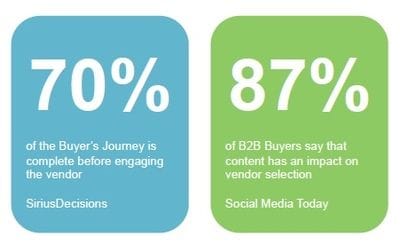Content Marketing - when it comes to content, more isn't better; better is better.
Content Marketing has become more critical over the past few years. It has become more important with the change in the role of consumers. We have more active roles within the buying process. Before we talk to a salesperson, if at all, we go through a process of discovering information, learning what we can choose and then purchasing. After purchase, there is the implementing state, proving and owning the product or service.

For content to be successful, it needs to engage and convert buyers. Your content needs to tell the entire story of your company and connect with the buyer in all the ways they need throughout their buying journey. When the buyer has reached a tipping point, they realise they have a pain that they need to learn more about. This is where content marketing can be so effective.
We work with you to create the tools you need to deliver compelling content.
3. Content Strategy aligned to the customer journey and their pain points
Customer Journey Stages
The first step to effective content marketing is understanding how your customers buy. Your buyers go through a journey where they have different needs and questions. High-quality content can help move a potential prospect to a loyal customer advocate. Please look at the stages your customers are moving through below.
Discovery Stage
In Discovering, the buyer has reached a tipping point, realising they have a pain point they need to learn more about. The buyer conducts educational research to understand better the pain point they're experiencing. This research includes defining the problem, understanding potential causes, seeing how others have tackled the problem, and exploring best practices to address the issue. Based on this research, the buyer clearly defines the problem and decides that it's worth moving forward to address it.
Learning Stage
In Learning, the buyer researches possible solutions to solving their defined problem and begins to identify specific providers. They consider the various choices available to their business needs and create a broad list of solutions.
Choosing Stage
In Choosing, the buyer must prove to internal stakeholders that a solution is worth employing to address their problem. Once approved, the buyer compares and contrasts solutions, cuts their broad list of solution options into a short list, and makes a final decision.
Purchasing Stage
In purchasing, the buyer procures the solution and prepares to own, maintain, and deploy the solution. This requires planning, internal alignment, resourcing, approvals and everything the buyer needs to do internally to complete a purchase.
Implementing Stage
In Implementation, the buyer deploys the solution, sets up users, receives training, etc. This process typically involves educating and incorporating a new wave of people into the solution and the process, potentially from diverse groups across the organisation.
Proving Stage
In Proving, the buyer is now using the solution and evaluating its qualities, benefits, and ROI or soon-to-be ROI.
Owning Stage
In Owning, the buyer uses the solution, maintains it, receives updates on new capabilities, realises its ROI, and expands its usage.
Ask about how you can improve your Content marketing today.




